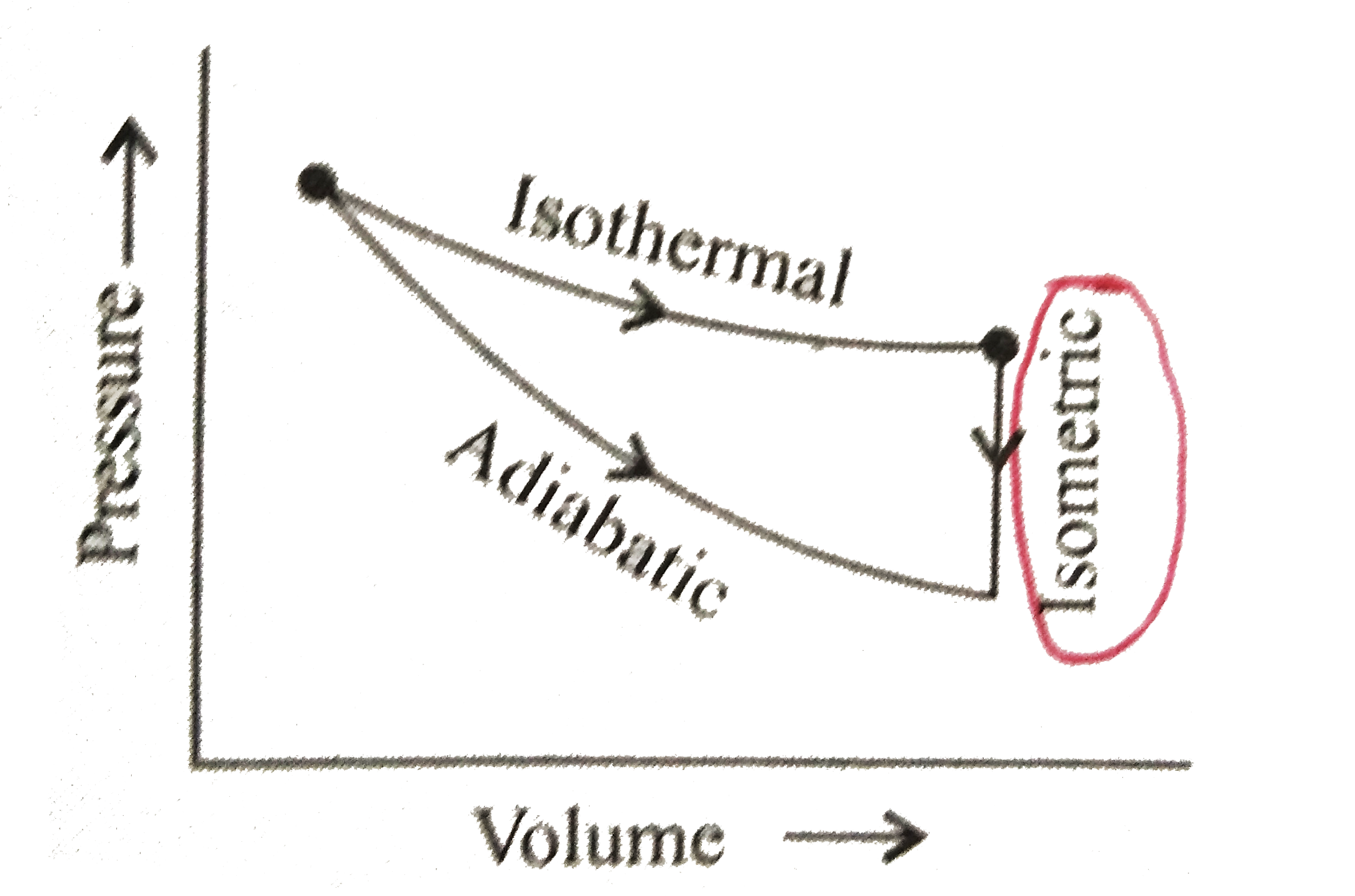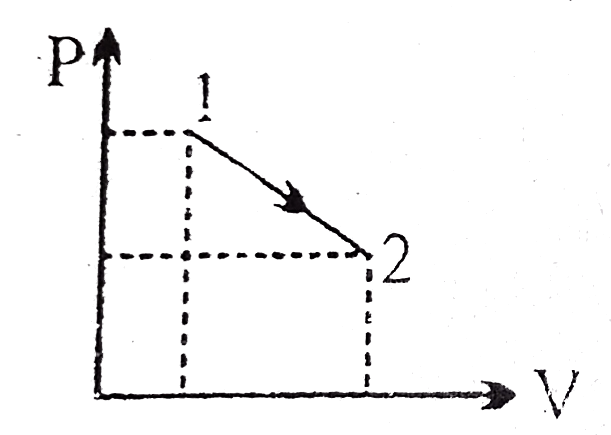A reversible adiabatic path on a P-V diagram for an ideal gas passes through state A where P=0.7×105N/m2andv=0.0049m3. The ratio of specific heat of the gas is 1.4. The slope of path at A is
2.0×107Nm−5
1.0×107Nm−5
−2.0XX107Nm−5
−1.0×107Nm−5
The correct Answer is:C
Step by step video, text & image solution for A reversible adiabatic path on a P-V diagram for an ideal gas passes through state A where P = 0.7 xx 10^(5) N//m ^(2) and v = 0.0049 m ^(3). The ratio of specific heat of the gas is 1.4. The slope of path at A is by Physics experts to help you in doubts & scoring excellent marks in Class 12 exams.
Updated on:21/07/2023Topper's Solved these Questions
- HEAT-2 Book:MOTIONChapter:HEAT-2 Exercise:EXERCISE-2 (LEVEL-I)
Explore 24 Videos
- HEAT-2 Book:MOTIONChapter:HEAT-2 Exercise:EXERCISE-2 (LEVEL-II)
Explore 13 Videos
- HEAT-2 Book:MOTIONChapter:HEAT-2 Exercise:EXERCISE-4 (LEVEL-II)
Explore 30 Videos
- HEAT TRANSFER & THERMAL EXPANSION Book:MOTIONChapter:HEAT TRANSFER & THERMAL EXPANSION Exercise:Exercise - 3 Section-B
Explore 19 Videos
- HYDROSTATIC, FLUID MECHANICS & VISCOSITYBook:MOTIONChapter:HYDROSTATIC, FLUID MECHANICS & VISCOSITYExercise:EXERCISE -3 (SECTION-B) PREVIOUS YEAR PROBLEM
Explore 7 Videos
Similar Questions
An ideal gas with pressure P, volume V and temperature T is expanded isothermically to a volume 2V and a final pressure Pi, If the same gas is expanded adiabatically to a volume 2V, the final pressure Pa. The ratio of the specific heats of the gas is 1.67. The ratio PaP1 is .......
View SolutionDuring an adiabatic process of an ideal gas, if P is proportional to 1V1.5, then the ratio of specific heat capacities at constant pressure to that at constant volume for the gas is
View Solution
Knowledge Check
The ratio of the specific heats of a gas is CpCv=1.66 then the gas may be
ACO2BHeCH2DNO2The ratio of specific heats of a gas is 1.4. if the value of CV is 20.8 J/mol K, then the CP is
A3.93 cal/mol KB4.93 cal/mol KC5.93 cal/mol KD6.93 cal/mol KFor an adiabatic change in a gas, if P,V,T denotes pressure, volume and absolute temperature of a gas at any time and γ is the ratio of specific heats of the gas, then which of the following equation is true?
ATγP1−γ= const.BT1−γPγ= const.CTγ−1Vγ= const.DTγVγ= const.
An ideal gas with pressure P, volume V and temperature T is expanded isothermally to a volume 2V and final pressure PI. The same gas is expanded adiabatically to a volume 2V and final pressure in this case is PA. In terms of the ratio of the two specific heats for the gas γ, the ratio PI/PA is
View SolutionAn ideal gas with pressure P, volume V and temperature T is expanded isothermally to a volume 2V and final pressure PI. The same gas is expanded adiabatically to a volume 2V and final pressure in this case is PA. In terms of the ratio of the two specific heats for the gas γ, the ratio PI/PA is
View SolutionAn ideal diatomic gas is caused to pass throguh a cycle shown on the P−V diagram in figure, where V2=3.00V1. If P1,V1,and T1 specify the state 1, then the temperature of the state 3 is

View SolutionA process 1→2 using monoatomic gas is shown on the P-V diagram on the right P1=2P2=106N/m2,V2=4V1=0.4m3 The heat ansorbed by the gas

View SolutionA gas is undergoing an adiabatic process. At a certain stage, the volume and absolute temperature of the gas are V0,T0 and the magnitude of the slope of the V-T curve is m. molar specific heat of the gas at constant pressure is [Assume the volume of the gas is taken on the y-axis and absolute temperature of the gas taken on x-axis]
View Solution